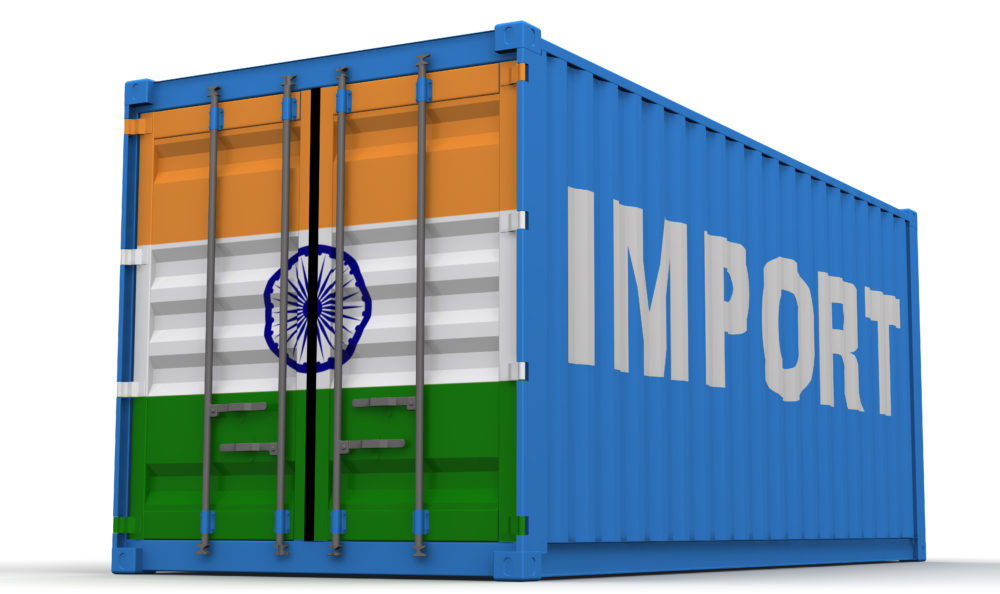Step 1. Obtaining import license and quota
In all countries there are many government regulations to be followed. Sanction of the government is necessary. Importer has to apply to the controller of imports for getting necessary permission.
Importer has to attach the following documents to his application form :-
- Receipt which shows that import license fee has been paid.
- Certificate from a Chartered Accountant showing the total value of goods to be imported.
- Verification Certificate for income tax.
An import license may be general or specific. A general license allows imports from any country. But a specific license allows imports from a specific country only.
The importer also has to obtain an import quota certificate from the concerned authority. It mentions the maximum quantity of goods which can be imported.
Step 2. Obtaining foreign exchange
Before placing any order, the importer must apply to the Exchange Control Department (ECD) of RBI (India’s Central Bank) for the release of requisite foreign exchange. The importer should forward the application through his bank. The ECD verifies the application of the importer, and if found valid, sanctions the foreign exchange for the particular transaction.
Step 3. Placing an order
The importer may either place the order directly or through the indent house (Agent). In case of canalised items, he obtains the imports through the canalizing agency. (Canalisation means channelisation of goods through a government agency like MMTC). The importer cannot directly import such canalized items. They have to place an order with the canalizing agency who shall import and supply the same.
Step 4. Dispatching letter of credit
After getting the confirmation from the supplier regarding the supply of goods, the importer requests his bank to issue a Letter of credit in favour of the supplier. It can be defined as “an undertaking by the importer’s bank stating that payment will be made to the exporter if the required documents are presented to the bank”.
Step 5. Appointing clearing and forwarding agents
The importer makes arrangements to appoint clearing and forwarding agents to clear the goods from the customs. Since clearing of goods is a specialized job, it is better to appoint C & F agents.
Step 6. Receipt of shipment device
The importer receives the shipment advice from the exporter. The shipment advice states the date on which the goods are loaded on the ship. The shipment advice helps the importer to make arrangements for clearance of goods.
Step 7. Receipts of documents
The importer’s bank receives the documents from the exporter’s bank. The documents include bill of exchange, a copy of bill of lading, certificate of origin, commercial invoice, consular invoice, packing list, and other relevant documents. The importer makes payment to the bank (if not paid earlier) and collects the documents.
Step 8. Bill of entry
This is a document required in case of import of goods. It is like a shipping bill in case of exports. A Bill of Entry is the document testifying the fact that goods of the stated value and description in specified quantity are entering into the country from abroad. The customs office supplies this form which is prepared in triplicate. Three different colours are used to prepare the bill of entry.One copy is retained by the customs department, another is retained by port trust and the third is kept by the importer.
Step 9. Delivery order
The clearing agents obtain the delivery order from the office of the shipping company. The shipping company gives the delivery order only after payment of freight, if any.
Step 10. Clearing of goods
The clearing agent pays the necessary dock or port trust dues and obtains the port Trust Receipt in two copies.
He then approaches the Customs House and presents one copy of Port Trust Receipt, and two copies of Bill of. Entry to the customs authorities. The customs officer endorses the Bill of Entry Forms and one copy of Bill of Entry is handed back to the importer. The importer then pays the customs duty and clears the goods. In case, the customs duty is not paid, then the goods are stored in the bonded warehouses. As and when the duty is paid, the goods are cleared from the docks.
Step 11. Payment to clearing and forwarding agent
The importer then makes the necessary payment to the clearing agent for his various expenses and fees.
Step 12. Payment to exporter
The importer has to make payment to the exporter. Usually, the exporter draws a bill of exchange. The importer has to accept the bill and make payment.
Step 13. Follow up
The importer then informs the exporter about the receipt of goods. If there are any discrepancies or damages to the goods, he should inform the exporter.



